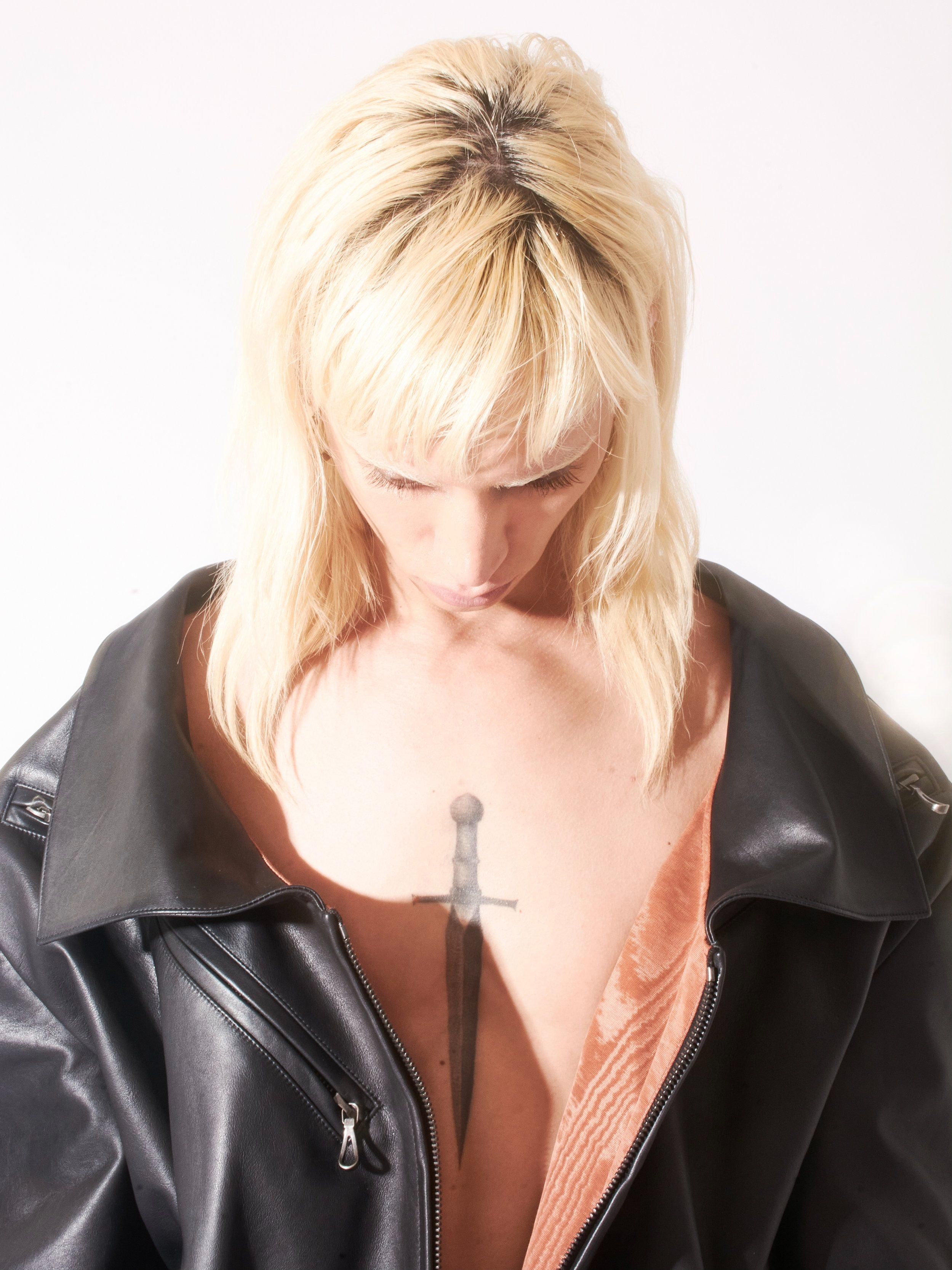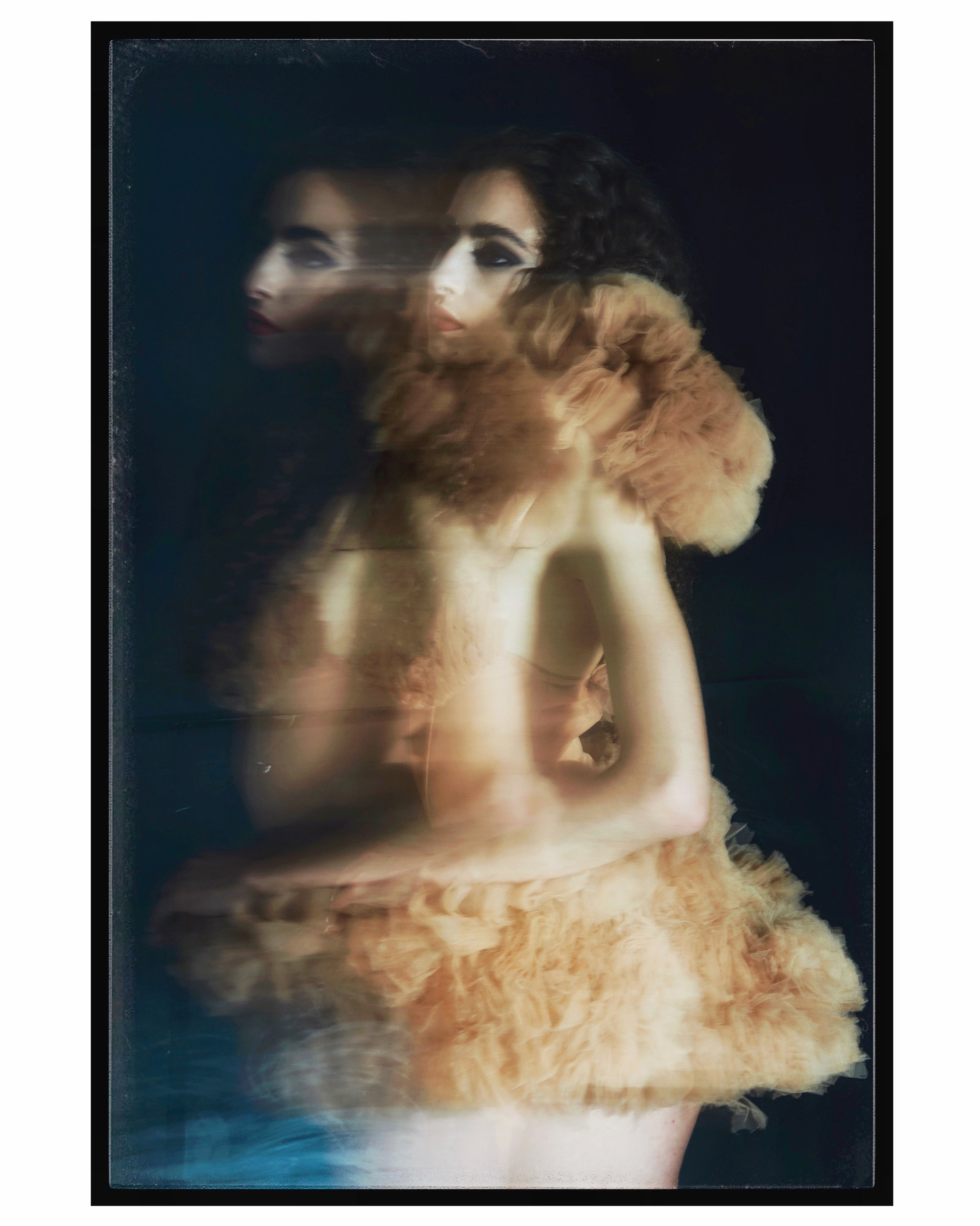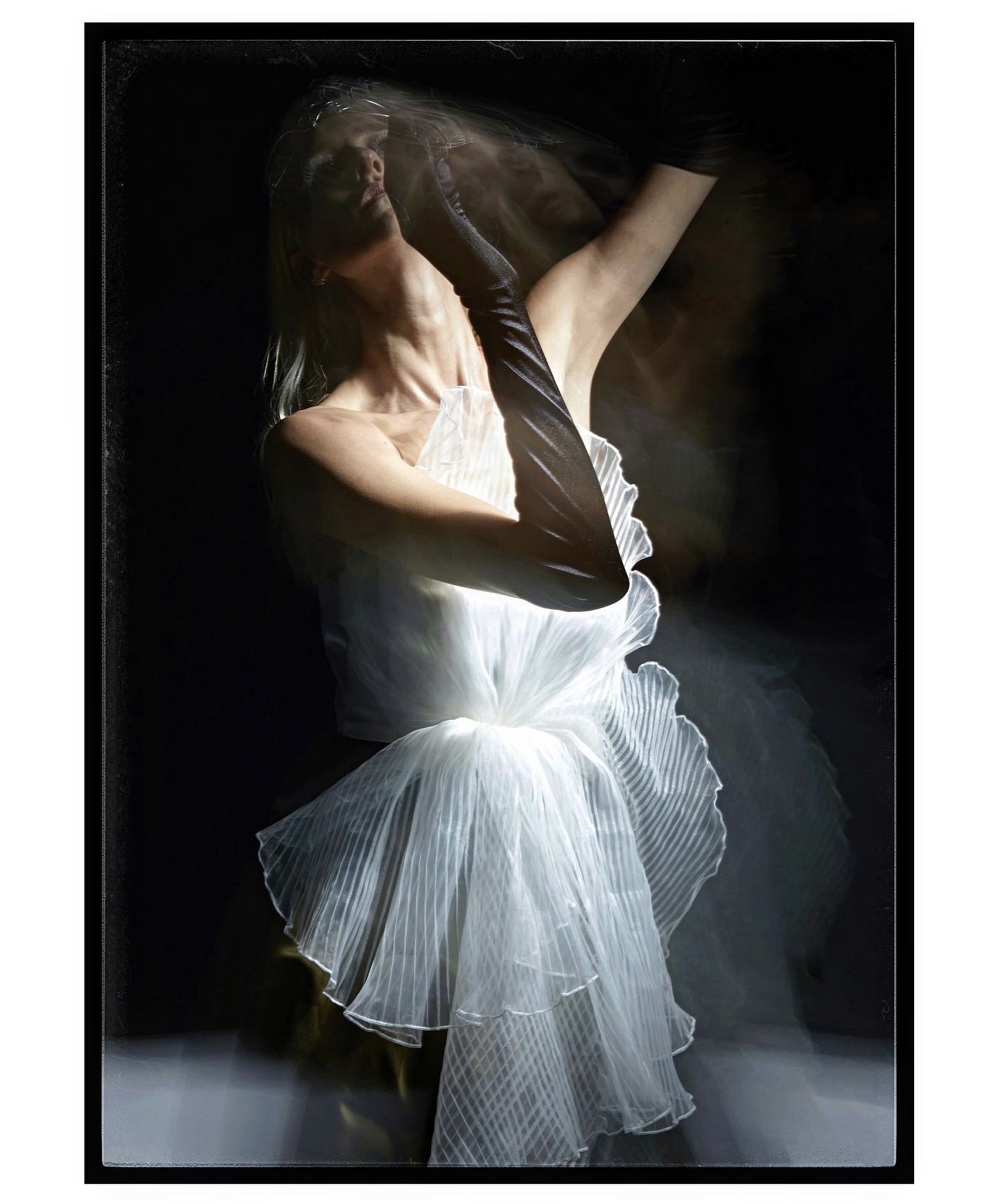Interview: Giovanni Lero
interview by davy miles, transcribed by zara abubakar
photography by giovanni lero
“I am Giovanni. I am originally from China, and have lived in France for about 5 years. I did my bachelor’s at Istituto Marangoni. Right now, I’m working as a freelance stylist and photographer.
In my recent work, I have expressed 6 main concepts. Each one is connected to another. Time, reality and virtual (Metaverse), performance, black, balance (Eclecticism), human and Cyborg. It all started in the cinema, even before the photo, I went to the cinema a lot. I watched a lot of films, the new waves, Dogme95 ... I was fascinated precisely by the commitment of an image then I take my photos. The moment, one still frame, is from a movie that I couldn't have made. It is fleeting, it is temporal. I invent a time that does not exist, that moves away and comes back, a looping time (Mobius), time past and time future, all towards a single end, time present. I search in my photos for a temporal and eternal value, like impossible love. Whether it's in the studio, or outside, I want the movement, the drama, it is always a performance. I'm trying to take into account a big reason that I exposed everything on a black screen, it becomes an obligation, a fantasy, this manifesto, De Profundis, it comes from deep within.”
Davy: What photographers would you say are your influences or inspire you the most?
Giovanni: I would say Sara Moon, a French photographer, and Paolo Roversi, an Italian photographer. Also Jurgen Teller, a German photographer. He always has his models do weird poses.
Davy: When you’re taking a photo, what are some things you might say or do to get that great photo? What distinguishes it from just taking photos on your phone?
Giovanni: There’s a concept called “uncanny valley”, which means something strange but familiar. This is something I was always searching for – the pose is quite important. Sometimes it’s not sexy, so I’m always searching for something that expresses the body. To understand the body and how it works, to understand when something has strength but is also very soft. The process is very important. So for me, I was always looking for something that can speak, makes you feel very familiar, but at the same time it’s something very fresh. That’s how I direct models, and of course I search for inspiration before, from magazines, from everywhere. Afterwards, I have my own ideas. With the poses, it’s also important to express the theme of the photo, because every image speaks.
Davy: And every image has a story, yeah. This doesn’t happen when I look at certain other photographers, that’s why I love Nadia Lee Cohen so much, as soon as I look at her photos, I immediately have this character in mind –
Giovanni: Yes. For me a picture is like a moment, one captured moment. It’s like a moment a film. Every picture I do is like a film I cannot make. I want to try and make a full story, but I cannot, so instead I take a picture.
Davy: Would you say fashion school has helped you, and would you recommend it?
Giovanni: In my case, fashion school is not very technical, it helps you understand the meaning and the culture behind the image.
Davy: I feel like a lot of it is making connections, too.
Giovanni: Yes, but it’s a connection between clothes, and how to make it into something more like art. I think it helps, but I would say that if you really want to study something more geared towards history, culture, and things like that, you can go to fashion school. Otherwise, go to a more technical school. Fashion is quite special, it’s really about expressing yourself.
Davy: What would you say are your other influences?
Giovanni: Nowadays they’re doing things like 3D and Metaverse. They’re tools, it’s like a language, so to speak. Fashion is about this essence of what you want to express. I think it depends.
Davy: I feel like anyone can make the most out of anything, it’s what you put into it. You can go to fashion school and mess around and say you hated it, or you can be serious and try to learn from it. What is the most important element for you, when shooting? Is it the clothes, the model, the background, and the sets, or how it all comes together?
Giovanni: To be honest, every part is important to tell a story everything needs to match. If you want to do a successful editorial, every part of the image has to match. The clothes must match the set, the colors, everything. Things like the make-up and the hair is also important. For me, I think the most important is the set, and the model. The model expresses what I want. Today there’s a trend because people look for these kind of images in fashion. If you’re connected to a picture, it can sell.
Davy: [In modelling] I don’t think it’s about beauty, either you have it, or you don’t – and if you’re able to emote properly and communicate.
Giovanni: It is about communication. Both of you should understand what you’re doing – and you need to be very in tune with this energy between photographer and model.
Davy: Do you have any tips or advice to anyone that wants to get into fashion photography?
Giovanni: The difference between fashion photography and just photography is the word “fashion”. You need to understand the word and what it means. Fashion means the spirit of time – it’s about the zeitgeist. It’s about something that is relevant. And with fashion photography, the thing is that it doesn’t depend on how you shoot a photo. You can shoot with an iPhone, on film - it all depends on what you want to express. I think that’s very special, the things you want to express or want to say, through the pictures, through the model, through the styling and the clothes. You have to be clear about what you want to say.
This interview has been condensed for clarity.







